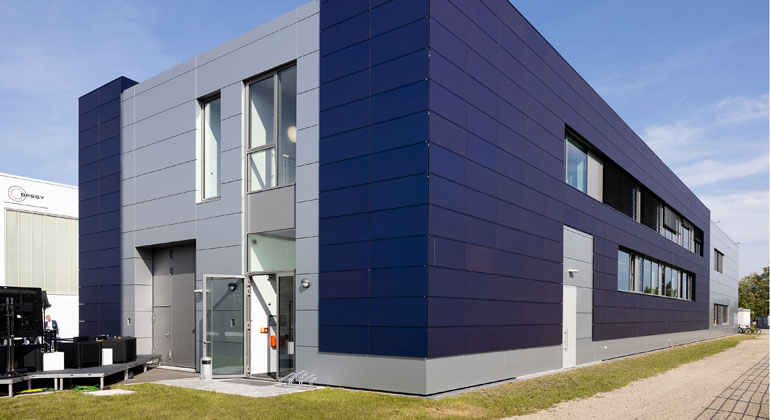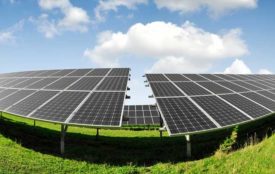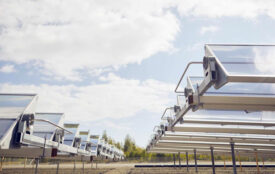HZB uses electricity-producing facade wall as real laboratory
What makes it so special is that the elegant façade not only generates up to 50 kilowatts of electricity (peak power). It also provides important insights into the behaviour of the solar modules under different weather conditions.
Solar energy is considered one of the most promising renewable energies. More and more houses have a photovoltaics on the roof and large open-space systems are increasingly being seen. But solar modules can also be integrated in more diverse ways, for example in building facades. Through the solar activation of the entire building envelope, photovoltaics becomes a building element and turns buildings into electricity generators. Moreover, the solar modules can also be integrated in a visually appealing way. For two years now, the HZB-based consulting office for building-integrated Photovoltaics (BAIP) has been providing advice on precisely this topic.
Now the HZB itself is doing the practical test. “For the first time, a complete building with a facade-integrated photovoltaic system is being operated as a real laboratory. The extensive measurement technology enables new insights into the real behaviour of solar modules in a facade in different seasons and weather conditions, over a long period of time,” says Dr. Björn Rau, who heads the BAIP office at HZB.
The most important in brief:
- the real lab consists of 360 CIGS thin-film solar modules installed on three facades (west, south and north sides)
- Power per module: approx. 135 watts (peak power of the entire facade: just under 50 kilowatts)
- additional sensor technology (including 72 temperature, 10 irradiation and 4 wind sensors) installed
- serves for long-term investigation of PV yields as a function of environmental factors (pollution), weather conditions (sun, wind, reflection) and compass directions, etc.
- Comparison between real data and simulation values of yield forecasts
A special feature is the concealed suspension. It enables a frameless design without additional edging at the edge of the module. This makes it possible to combine the modules ideally with the metal curtain wall of the building. Björn Rau emphasises: “We also deliberately placed value on the design integration of the modules into the building envelope and, with CIGS technology, selected the material system about which there is a very great deal of expertise at HZB.” Many research groups at HZB work with CIGS thin films, from materials research to the development of building elements.
The research building: what happens inside
The facade serves as a real laboratory for photovoltaics research, but something completely different happens inside the building: here, researchers develop and build worldwide unique components for BESSY II and other synchrotrons. The building houses a clean room, various laboratories and assembly stations for HZB’s internationally renowned accelerator research.








